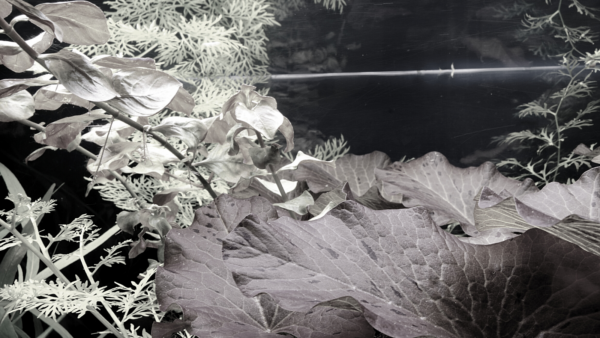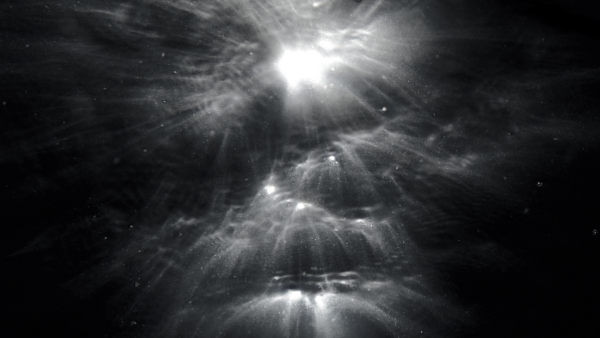“Inventing is making things that are parallel in space meet in time or vice versa, so that they present a new fact in their conjunction,” contests Vicente Huidobro in “We Must Create,” his 1922 manifesto of “Creacionismo.” The Chilean poet’s emphasis on conjunction and Creacionismo’s ideal of a “translatable and universal” text indicate the centrality of translation to his creative practice. This orientation finds a clear expression in Sky-Quake: Tremor of Heaven, published in a Spanish version in 1931 (Temblor de cielo) and in French in 1932 (Tremblement de ciel). Newly available from co·im·press as a trilingual text with a collaborative English translation by Ignacio Infante and Michael Leong, Sky-Quake highlights the importance of translation to the historical avant-garde. Moreover, Huidobro’s text exemplifies Antoine Berman’s description of a “true literary work,” which is “always developed against the background of translation.”
Sky-Quake: Tremor of Heaven emerges from multiple registers of translation. The text adapts the narrative of Tristan and Isolde to an avant-garde aesthetic frame, drawing on the medieval romance as well as Richard Wagner’s opera (which was performed in Paris during Huidobro’s stay in Europe). Huidobro was clearly interested in testing the conventions of narrative, as Sky-Quake follows closely on the heels of 1931’s modernist epic Altazor. While Huidobro retains a trace of his source narrative, Sky-Quake takes the form of a dramatic monologue in densely poetic prose, reminiscent of Lautréamont’s Maldoror. Translators Infante and Leong closely follow Huidobro’s baroque syntax, which captures Tristan’s doomy disdain and leaves space for surreal juxtapositions: “Flowers will grow beneath the aquarium, flowers will grow beneath the earth at the cemetery, and the oldest coffin will appear one day above the ground supported by the arms of aromas like robust stalks.”
Huidobro’s revision of the Tristan and Isolde narrative participates in the surrealist tension between deconstructing the body and objectifying the feminine form. Huidobro makes this tension explicit in scenes of both literal and figurative dissection perpetrated at times by incidental figures like “the doctor” who “escapes with the valise in which he has hidden the eyes of the unforgettable beloved.” Elsewhere, it is the speaker himself who dismembers Isolde, an act that is uncannily mirrored by the environment: “the curtains assumed the shape of ears, the shape of eyelids with lashes of silence. Then I bent over you as if over a dissecting table, and sinking my lips into you, looked at you; your womb resembled an open wound and your eyes the end of the world.” Throughout the text, Huidobro withholds concrete descriptions of Isolde, and she becomes an idealized, abstracted figure of femininity. Consistent with both the Tristan and Isolde narrative and with surrealist aesthetics, Isolde is also the nexus of eroticism and death, mediated by the male gaze: “She will wear madness with all her luminosity and will be like the silken screen watched by the dying man.”

However, the text complicates this morbid objectification by testing the limits of spectatorship and aesthetic distance. Huidobro activates descriptions of distinctly modernist visual media—the panorama, the cinema, and the aquarium—in conjunction with ocean imagery to achieve this effect. Of particular interest is the aquarium, a distinctly modernist device which crystallizes the natural world in a commodity intended to be simultaneously possessed and viewed from a distance. Celeste Olalquiaga notes in The Artificial Kingdom that the development of the aquarium coincides with the “deracination” inherent in modern commodity culture, since plants and animals “were extricated from their natural habitat, relocated into an artificial one, and subordinated to the implicit scopophilia of display.” Similarly, in Sky-Quake, the objectified feminine figure is “deracinated” and preserved in the kitschy death of commodification. “Do you hear night’s coffin being nailed?” asks Tristan. “Do you see the naked beauty in her aquarium of death?” However, the aesthetic distance established by the aquarium cannot hold, and by the end of the poem Tristan urges the reader to “[e]nter, you all, into your own vertiginous cavern; descend without chloroform into your intimate depths.” The glass cracks, so to speak, and Isolde’s idealized femininity overwhelms the speaker’s previously stable subject position: “Isolde, sometimes I want to drown myself in a female sea. The night reigns on the two shores of your gaze and I walk along through the world. I walk along in silence. I walk along like the solitude of the dead.”
The connection between Tristan’s longing to “drown […] in a female sea” and the feedback loops of translation from which Sky-Quake emanates might be illuminated by the German Romantic writer Novalis’ concept of “infinite versability,” defined by Antoine Berman in The Experience of the Foreign as “a variant of versatility which seems to unite version, inversion, conversion, interversion, pouring [versement].” The Jena Romantics viewed poetic production, translation, and criticism as equal constituents of a larger cultural enterprise (Bildung). As Berman points out, this view also questions the stability of the text as a monolithic aesthetic object, since “the theory of infinite versability is also a theory of the infinite version.” Compare this to Huidobro’s claim in “We Must Create” that “[t]he totality of the diverse new facts united by a single spirit constitutes the created work.”
Sky-Quake itself might be read as a uniquely modernist model of infinite versability, devouring and reconstituting earlier genres like the epic verse of Altazor and Huidobro’s critical statements on aesthetics in his Creacionismo manifestoes. Huidobro’s baroque revision of Tristan and Isolde offers up numerous statements that resonate with the manifestoes’ anti-mimetic stance: “How many things have died inside us. How many dead do we carry within us. Why do we cling to our dead? Why do we insist on bringing them back? They prevent us from seeing the birth of an idea. We are afraid of the new light emerging, which we are not used to yet.”

Unlike previous translators, Infante and Leong foreground Sky-Quake’s intertextuality, noting that “both works constitute two parallel poetic artefacts contemporaneously produced in two different languages—as such, Temblor de cielo and Tremblement de ciel comprise together a larger artwork.” Infante and Leong approach the “infinite versability” of Sky-Quake “by engaging the translation process as originating from both the Spanish and the French texts. Our translation is, thus, constituted by a fluid translational method constantly connecting both parallel originals.” The translators’ collaborative approach allows them to attend to the Spanish and French texts as equal, mirrored versions, while the English translation takes shape in the mise-en-abîme.
Near the end of Sky-Quake, as Tristan’s death approaches, he declares, “I am not afraid of nothingness and I wouldn’t fear it even if I didn’t have the certainty of remaining in my echo, of intangibly rolling from echo to echo.” It seems plausible that Huidobro might have been thinking of the infinite versioning of translation and its utopic international possibilities. Infante and Leong have managed to capture the infinite versability of this text that pours between genres and languages. Sky-Quake serves as an excellent reminder that, as Berman argues, “the translation is a priori present in any original: Any work, as far as one can go back, is already to several degrees a fabric of translations or a creation that has something to do with the translating operation.”
Zack Anderson is a poet and translator from Wyoming, a graduate of the University of Notre Dame MFA program, and a PhD student at the University of Georgia. His book reviews and critical writings can be found in Harvard Review, Kenyon Review, and the Action Books blog, and his poems have recently appeared in Fairy Tale Review, New Delta Review, and Dreginald.
